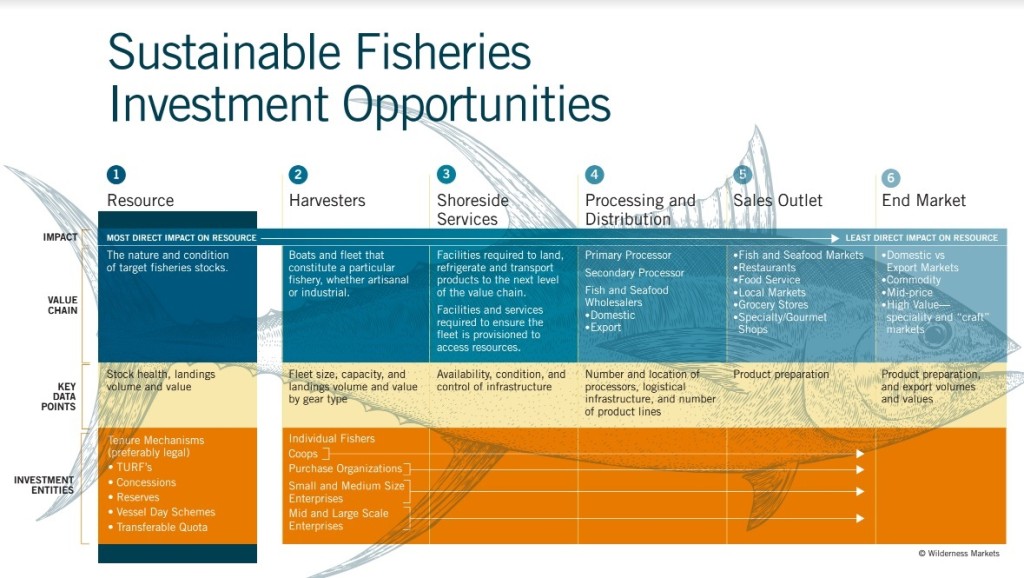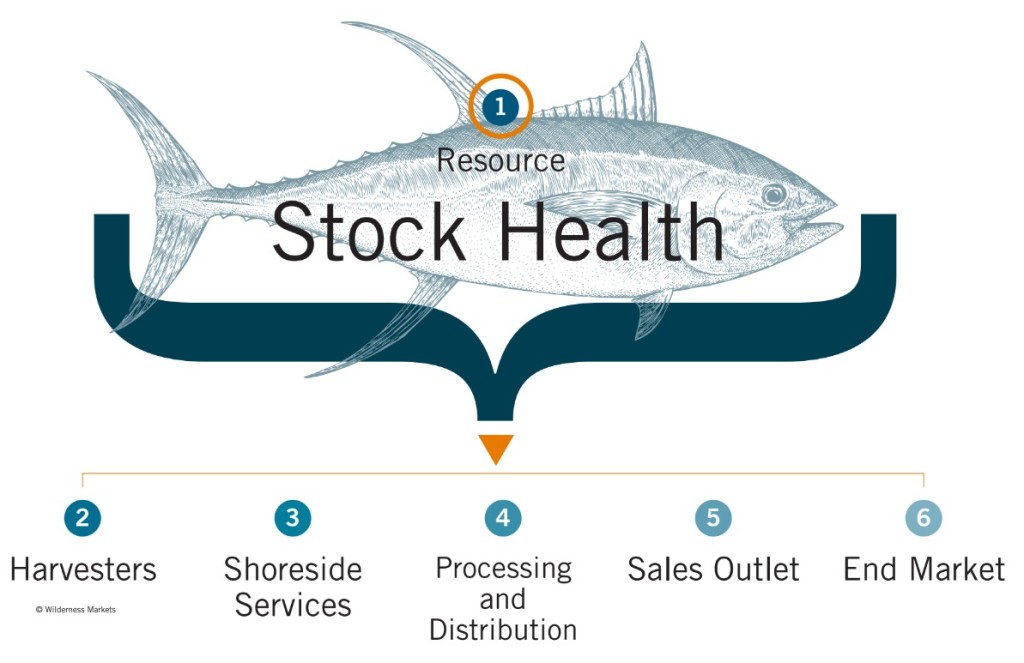Current Paths for Sustainable Fisheries Investment
lnvestors, including impact investors, can invest in the fisheries sector through two general approaches (see figure below). The first, more traditional, approach invests in fishing or seafood supply chain businesses. Examples at the level of fishers in supply chain include funding for fishing companies or cooperatives to purchase more sustainable fishing gear (e.g., that excludes bycatch or protects ocean habitats), improve vessels, or buy cold storage equipment. Further up the supply chain are investments in processing and logistics businesses. Return on these investments stems from increased productivity and efficiency of fishing; reduced waste; increased access to markets; ; and/or higher product values.
The second approach for investors is at the resource level. For example, in some fisheries like West Coast Groundfish in the United States, investors can purchase rights to fish with the potential to sell or lease these rights for environmental, social, and/or financial benefit in the future. Similar to purchasing equity or stock in a company, equity in the right to fish in a limited-access fishery can be bought and sold. Examples include tradable fishing licenses, effort quota (such as vessel days), and fishing quota. Return on these investments relies on fish populations maintaining or increasing in abundance in the future.
These resource-level investments in the second approach require legally enforceable rights and robust tenure systems. As such, they currently exist almost exclusively in developed country fisheries that have robust ocean policies and strong legal systems to create, manage, and enforce ownership and transfer of fishing rights. Few of these resource-level investment opportunities exist in developing country fisheries.
Because of the open access nature of fisheries, without fisheries policy and management in place, investments in the supply chain are unlikely, in and of themselves, to improve the health of a fishery. They may reduce the impact of a participating firm or entity, but unless all firms apply the same standard, negative practices will continue to impede the recovery of a fishery.
More impactful are well structured resource level investments intrinsically tied to the biological recovery of a fishery. Improved fishery health will likely benefit these investments and thus drive a virtuous circle of fishery improvements, leading to improved social and economic outcomes, which in turn increases the economic value of the fishery.
Adapted from: Inamdar, Neel, Larry Band, Miguel Jorge, and Jada Tullos Anderson. Developing Impact Investment Opportunities for Return-Seeking Capital in Sustainable Marine Capture Fisheries. Edited by Ashley Simons. Washington, D.C.: World Bank Group, 2016.







